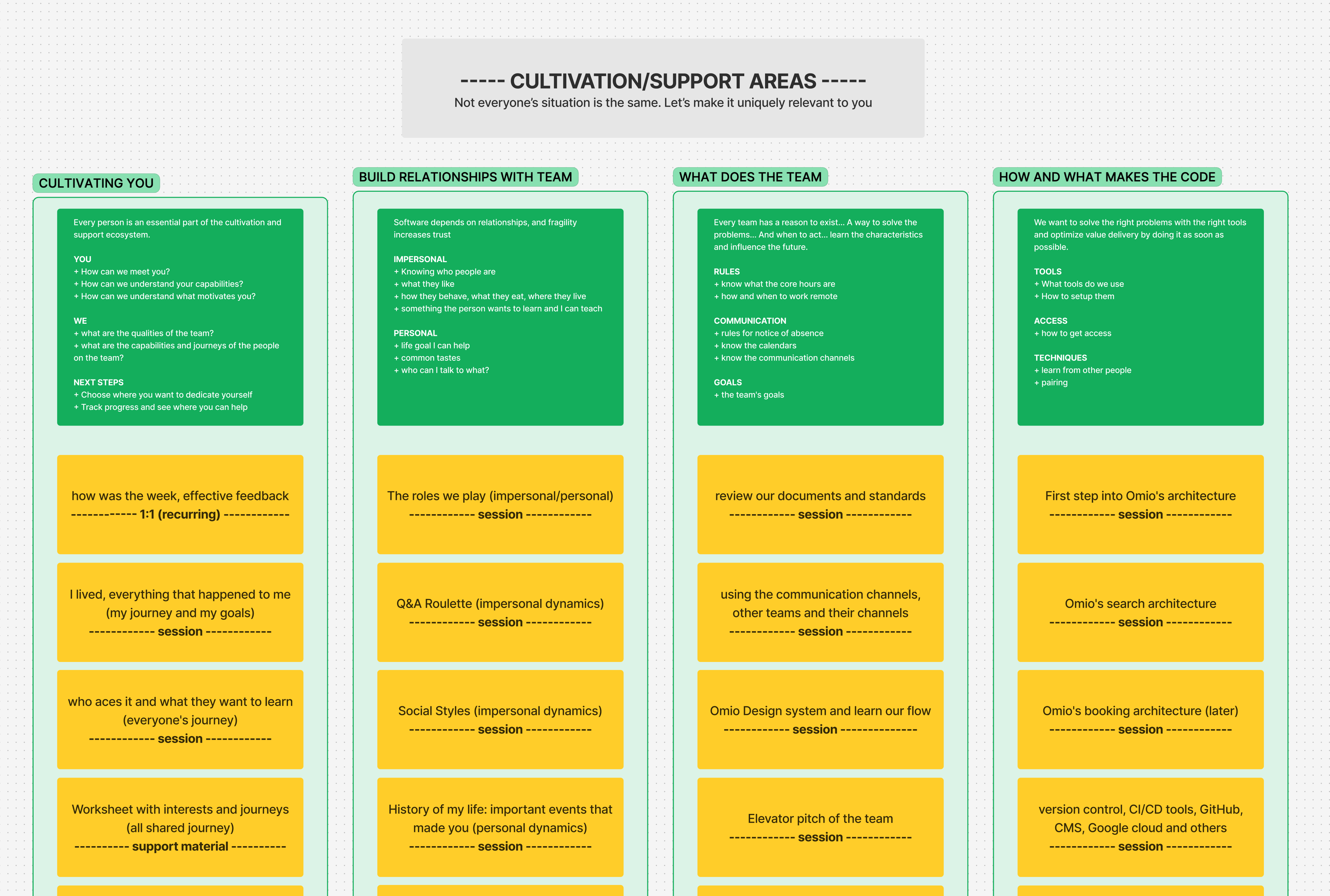Why We Built It
Starting a new job can be a mix of excitement and anxiety. The first few days shape how someone will contribute, connect, and grow within a team. Yet most onboarding is either rigid or nonexistent. At Monetization Tribe, we wanted to do better.
We didn’t want a checklist. We wanted a conversation. We didn’t want a script. We wanted connection.
That’s why I created the Connecting Onboard: a remote-first onboarding framework built to align expectations, build psychological safety, and create personalized onboarding journeys.
It was first used in early 2021. Since then, it’s become our go-to practice every time we welcome someone new—regardless of where they’re based.
What Is Connecting Onboard?
Connecting Onboard is a facilitated session using Figjam (or whiteboard) to uncover what really matters in someone’s first weeks:
- What do they need to feel safe?
- What support helps them grow?
- What are their preferences around collaboration, communication, and learning?
Rather than assume, we ask. Then we build a tailored onboarding roadmap with the whole team involved.
This play is used whether you’re onboarding remotely or in-person. It works for growing teams, for large orgs with interdependent squads, or tight-knit teams building foundations together.
When We Use It
We run a Connecting Onboard session in two key situations:
- At the start of any new hire
- When the team evolves and needs to realign expectations (e.g., new manager, new setup)
It’s especially useful when:
- People are remote or spread across time zones
- There’s no shared “office onboarding” routine
- You want to avoid ambiguity, misalignment, or unnecessary friction early on
The 3-Part Flow
Each session is divided into three key parts, inspired by the principles of safety, autonomy, and development. It’s usually facilitated in a 90-minute session using a prepared Figjam board.
1. Make People Awesome

This is where we share expectations. The new joiner explains how they see their role, and the team shares what they expect or hope to see. It’s about naming assumptions out loud—so we don’t carry them in silence.
“You’re not here to impress us. You’re here to join us.”
We divide into lanes:
- Purple: the new joiner writes down expectations and questions
- Blue: the team (buddy, manager) adds their notes
Then we go card by card—reading, reacting, discussing.
2. Make Safety a Prerequisite

Next, we talk about strengths, insecurities, and support areas. This is where psychological safety starts—not with words, but with visibility.
Each person writes:
- What they bring to the team
- What they hope to learn or improve
We split cards into orange (new joiner) and green (team). Then we read and discuss each, asking:
“How can we support this person in a way that’s honest and actionable?”
3. Cultivation & Support Areas

Finally, we co-create a personalized onboarding roadmap.
We list systems, people, and topics the new joiner should explore. Then we ask the joiner to pick the ones that resonate most—based on what excites them, or where they feel least confident.
The team then selects sessions they can support and adds them to a shared onboarding calendar. Everyone takes responsibility for helping someone grow.
It’s not just a warm welcome—it’s a real commitment.
Tools & Templates
- Connecting Onboard Figjam Template
- Use with any digital whiteboard tool (Figjam, Miro) or physically with markers and post-its
Why It Works
Because onboarding isn’t about logistics. It’s about belonging. It’s not about being “fast.” It’s about being clear and intentional.
With Connecting Onboard:
- No one joins alone
- Expectations are spoken, not assumed
- Growth starts on day one
And most importantly, it turns onboarding into what it should be: A two-way street.
Want to Try It?
Want help running your first session? Let us know—we’re happy to share tips, example boards, and facilitation tricks that made it smoother for us.